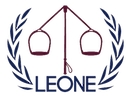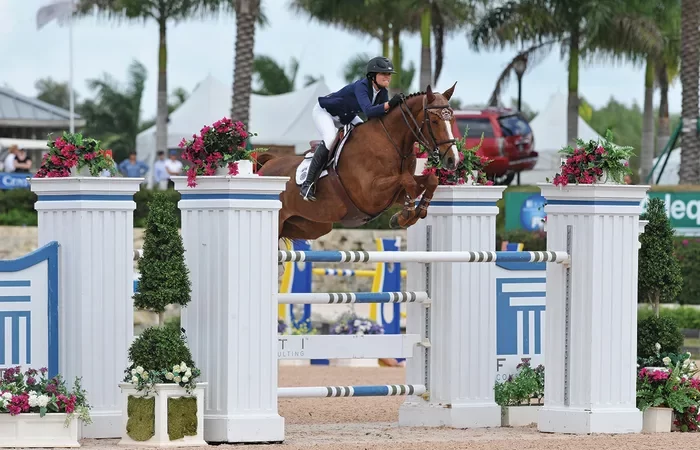I was involved in the fielding and funding of international U.S. equestrian teams as well as selecting coaches for those teams from 1992 through 2012, first as a member and officer of the U.S. Equestrian Team and then as vice president of international high performance at our national governing body USA Equestrian, now the U.S. Equestrian Federation. Before this, I had the privilege to ride in international events and on Nations Cup show jumping teams.
Our U.S. jumping team had one final opportunity to qualify for the 2024 Olympic Games in Paris. In order to qualify, they had to have a strong performance at the Pan American Games in Santiago, Chile. Ultimately, they earned team gold and punched their ticket to Paris. However, we should not have been in this position in the first place. We shouldn’t have to send our best horse-and-rider combinations to the Pan Ams, but we had no choice.
The U.S. jumping team’s performance throughout the past 12 years has been good, but in the past I feel we were able to accomplish as much with fewer resources. Our recent lack of sustained competitive excellence is not due to a lack of funding or too few riders. Rather, I have found that we send groups of very talented individual riders from a specific pool of athletes with extensive strings of horses rather than evaluating all capable athletes on an even playing field.
The U.S. arguably has some of the best riders and horses in the world. The current high performance jumping budget to send riders and teams to international competitions dwarfs the funding we had when I was involved with our national governing body and the USET (when it was responsible for high performance sport, before it became the USET Foundation, the current philanthropic partner to USEF). Our individual riders have some of the best horses in the world and are supported by entourages of trainers and staff. The resources of U.S. owners to purchase and provide horses for our athletes appear unlimited. Yet, we lose to other countries that have smaller programs, fewer horses and fewer riders to choose from.
The whole of our greatly talented jumping riders who are selected for our teams is currently not greater than the sum of its individual parts. Some very talented athletes with fewer resources are precluded from being selected for a major championship team, and at the same time, we do not seem to develop the same synergy and camaraderie as some other countries with fewer resources. All of these factors have been detrimental to increasing our successes.
It is time to have an annual U.S. National Jumping Championship that is again an integral part of our team selection process. All jumping riders vying for a spot on international U.S. teams for major events, such as the Olympic Games and world championships, should compete at one venue, at the same time, under the same conditions, and at a difficulty level that enables us to confidently rank the horse-and-rider combinations. The U.S. National Championship should mirror the FEI World Cup Final format, or other similar multi-round championship formats, and it must be essential to our selection process for major championship teams. It is time to return to a team selection process that has both objective and subjective elements.
How Would It Work?
The U.S. chef d’equipe, in conjunction with the USEF’s jumping discipline directors, USEF’s High Performance Jumping Sport Committee, and the event’s course designer would be responsible for ensuring that the courses meet specifications that will successfully assess current competitive excellence and readiness. The first- and second-placed combinations at the U.S. National Jumping Championship would earn spots on the U.S. team for the upcoming major event in question. The third-ranked combination would be named in the reserve position. The remaining riders for teams going to major events would continue to be named through the current selection process that looks at results in international shows and FEI rankings.
If an athlete decides not to compete in the U.S. National Jumping Championship, being placed on the team in one of the remaining spots by a selection committee and the chef d’equipe could be done. The selection committee and chef d’equipe could, at their discretion, put a desired horse-rider pair on the team if an unexpected event occurred at the U.S. National Jumping Championship that prevented the elite pair from placing at the top. Allowing a level of subjectivity to the selection process for major teams provides a “safety measure.” In short, an elite athlete who does not qualify for a U.S. team based on their results at the U.S. National Jumping Championship would still have an opportunity to make the U.S. team in question through the more subjective selection process.
The reasons for returning to a national jumping championship start with the benefit of putting all eligible horse-and-rider combinations together head-to-head, over the same courses, in the same place, and at the same time. The current selection system looks at competition results across a spectrum of international events and makes comparisons between athletes based on scores and performances at different events at different times, in different places, and under different conditions.
FEI five-star competitions are difficult, but they don’t provide a level playing field for athletes vying for a spot on a U.S. team for the most prominent competitions such as the Olympic Games or world championships. Having to jump at a specified time over a course designed according to the specifications of the selectors would weed out weaker horse-and-rider combinations. Teams should not be picked based on how a rider performs on their best day; teams should be picked based on how a rider does on any given day. With a national championship, everyone puts themselves on the same line at the same time.
All eligible horse-rider combinations should compete in the U.S. National Jumping Championship, and many riders would have multiple horses, but some would not. Having a national championship is fairer to riders who do not have multiple top-level horses and only have one top-level horse that is of Olympic or world championships quality.
Riders with larger stables of horses and benefactors have an advantage by being able to continually show at major events and earn FEI world ranking points. They can send different strings of horses to different shows. Because position on the FEI ranking list determines who can attend international shows, and position on the FEI ranking list is largely dependent on the number of competitions in which results are earned, it becomes very difficult if not impossible for a rider with a single horse to get to the competitions that are used to determine eligibility for championship team selection.
If a rider has only one high-quality horse, the pressure to continually compete for points is detrimental to managing and developing that horse for an Olympic Games or world championships. With a national championship, a top horse-and-rider combination would be able to earn a position on a team without having to sit at the top of the FEI computer list or other ranking systems. An experienced rider with one quality horse could plan for performance to peak at the U.S. National Jumping Championship and, if selected, the following Olympic Games or world championships. A veteran rider with an older horse should be able to go head-to-head and compete for a spot on the team. You only get to ride one horse at the Olympic Games, no matter how many you have at home.
A national championship also provides an opportunity for USEF and the USET Foundation to showcase our exceptional athletes and horses to the public and, most importantly, to the many dedicated individuals who support our international equestrian efforts. A national championship brings everyone together in one place at one time, allowing for sponsorship, media coverage and a common experience for all of our jumping athletes.
Designing several courses that test the horses and riders according to the specifications of the selectors provides the best opportunity to assess who should go to the Olympic Games or world championships, and it offers a training opportunity for all of the competitors. Having our developing riders watch and compete against the senior riders over the same course would help them improve. This creates a common training experience and more team unity.
Like any other team sport, a team of top individuals can be beaten by a team of individuals who, although less talented, work together as a unit. A national championship has the power to create true team unity and, equally important, create financial sponsorships to further support our teams. A national championship creates a unique coming together of the entire U.S. jumping community that our members can relate to, attend and watch.
Americans have always admired athletes who earn their way to the top. It is important that all of our talented athletes have an equal opportunity to make the team. Riding is an expensive sport. There’s no need to continue to make it more expensive and cost-prohibitive for our talented athletes. While it is always better to have more horses than fewer, riders should not be precluded from team selection if they only have one top horse. Riders with fewer horses are already at a disadvantage; we should not compound that by using a selection system that places quantity of competitions over quality of the individual horse-and-rider combination. It is time for the return of a U.S. National Jumping Championship as part of our jumping training and selection process.
Armand Leone of Leone Equestrian Law LLC is a business professional with expertise in health care, equestrian sports and law. An equestrian athlete dedicated to fair play, safe sport and clean competition, Leone served as a director on the board of the U.S. Equestrian Federation and was USEF vice president of international high performance for many years. He served on the USEF and U.S. Hunter Jumper Association special task forces on governance, safety, drugs and medications, trainer certifications and coach selection. Leone is co-owner at his family’s Ri-Arm Farm in Oakland, New Jersey, where he still rides and trains. He competed in FEI World Cup Finals and Nations Cups. He is a graduate of the Columbia Business School in New York and the Columbia School of Law. He received his M.D. from New York Medical College and his B.A. from the University of Virginia. Leone Equestrian Law LLC provides legal services and consultation for equestrian professionals. For more information, visit equestriancounsel.com or follow them on Facebook.
This article originally appeared in the Nov. 27-Dec. 11, 2023, issue of The Chronicle of the Horse. You can subscribe and get online access to a digital version and then enjoy a year of The Chronicle of the Horse and our lifestyle publication, Untacked. If you’re just following COTH online, you’re missing so much great unique content. Each print issue of the Chronicle is full of in-depth competition news, fascinating features, probing looks at issues within the sports of hunter/jumper, eventing and dressage, and stunning photography.

